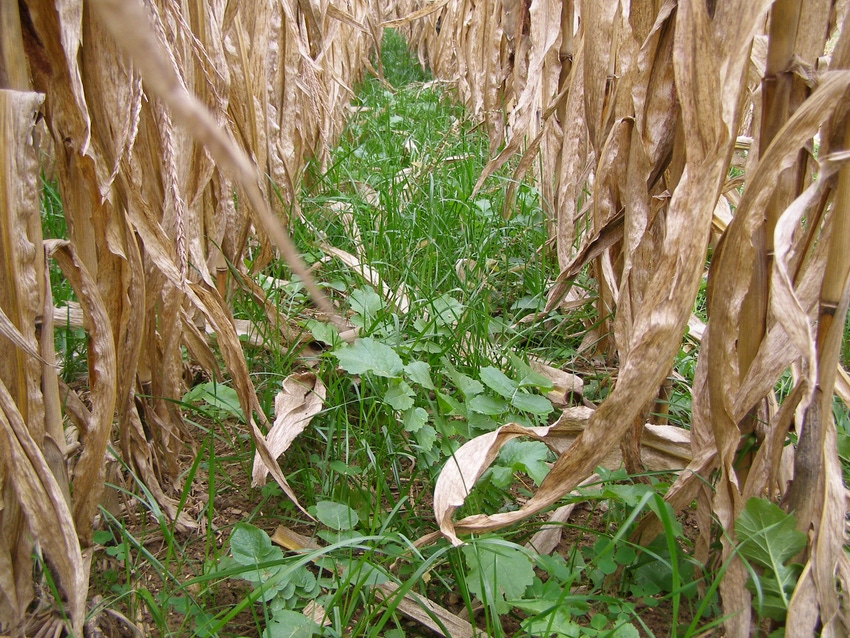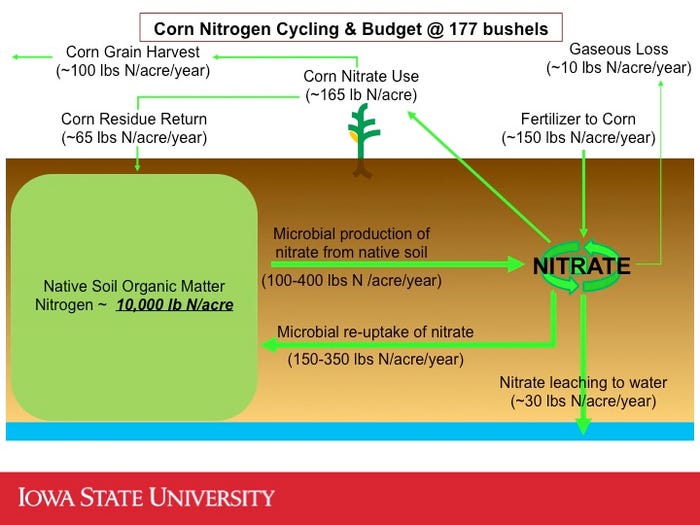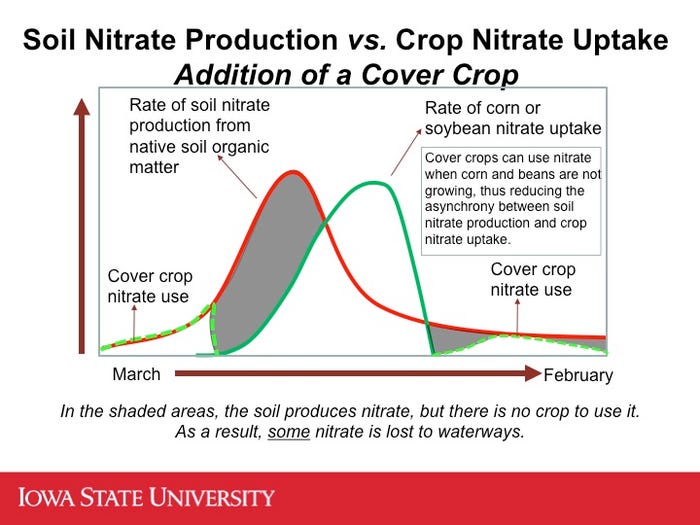February 3, 2017

------------
Think Different.
An accounting of nitrogen budgets for corn and soybeans reveals three realities about nitrogen and nitrate losses to water supplies that may surprise you:
Soybeans are not net contributors of nitrogen to the soil.
Optimum nitrogen fertilizer management is required to maintain the long-term productivity of Iowa soils
Nitrogen fertilizer management has only limited potential to reduce nitrate loss to waterways
-----------
Farmers, agronomists, and crop consultants heard recently that an accounting of nitrogen budgets in cropping systems reveals three common misconceptions about nitrogen (N) dynamics. Those dynamics, unfortunately, make it more difficult to retain nitrogen within agricultural cropping systems, said Dr. Michael Castellano, Associate Professor, Iowa State University.
He made the case to set the record straight on some long-held views on nitrogen fertilizer at the 28th Annual Integrated Crop Management Conference in Ames in late November.
Impact nitrates in water?
The realities, in some cases, point out how nitrogen fertilizer management can have less effect on nitrates in waterways than desired, and, in other cases, point out that not enough nitrogen may be applied to corn crops following soybeans.
Here are Castellano’s nitrogen realities:
Soybeans do not add nitrogen to the soil.
Castellano explored the “soybean nitrogen credit” and found that it’s not associated with biological nitrogen fixation or residue composition. “The hypothesis is that N fixation minus grain N harvest equals a nitrogen credit to the soil,” he says. “But nitrogen budgets show nitrogen fixation minus N grain harvest in soybeans is a deficit. That means soybeans take more nitrogen from the soil than they return to the soil.”
He also contends that soybean residue doesn’t decompose faster than corn residue, pound for pound. “Soybean residues do decompose in the field a bit faster than corn, but that’s because there is so much less of it,” he says. “That allows the soil to warm up and dry faster which speeds up decomposition. Castellano believes what’s referred to as the soybean nitrogen credit comes from less residue in the field.
Nitrogen fertilizer is required to maintain long-term productivity of Iowa soils.
Castellano points out soil organic matter—not nitrogen fertilizer—is the largest source of nitrogen for corn uptake. An approximate nitrogen budget per acre for a 175-bushel corn crop includes the production of 100 to 400 pounds of crop-available N from a native soil organic matter bank of 10,000 pounds of N per acre. Microbial re-uptake of nitrate from that bank and a fertilizer addition of 150 pounds is 150 to 350 pounds of N/acre/year.

Without nitrogen fertilizer, a nitrogen grain removal from a 175-bushel corn crop of 100 lbs. N/acre/year, plus 30 lbs N/acre/year loss to leaching, and gaseous loss of 10 lbs N/acre/year would result in a net loss of soil organic matter.
Deplete organic matter
While the ranges of microbial production and re-uptake of nitrogen are affected by weather and management, the approximate nitrogen budget shows soil organic matter can easily be depleted without nitrogen fertilizer.
Nitrogen fertilizer management has limited potential to reduce nitrate loss to waterways.
While many water quality advocates point to over-application of nitrogen to crops as a major source of nitrates in waterways, science points to nitrogen fertilizer management as among the least effective nitrogen reduction practices. “When the soil is warm and wet, soil microbes produce nitrate from soil organic matter whether or not a crop is growing,” Castellano points out. “There will be significant leaching if there’s no plant to use that nitrate. That’s why cover crops can be a much more effective measure than cutting nitrogen rates.”

Although it’s an important part of a nitrate reduction in waterways, nitrogen fertilizer management alone won’t come close to meeting Iowa’s nutrient loss reduction goals.
About the Author(s)
You May Also Like




